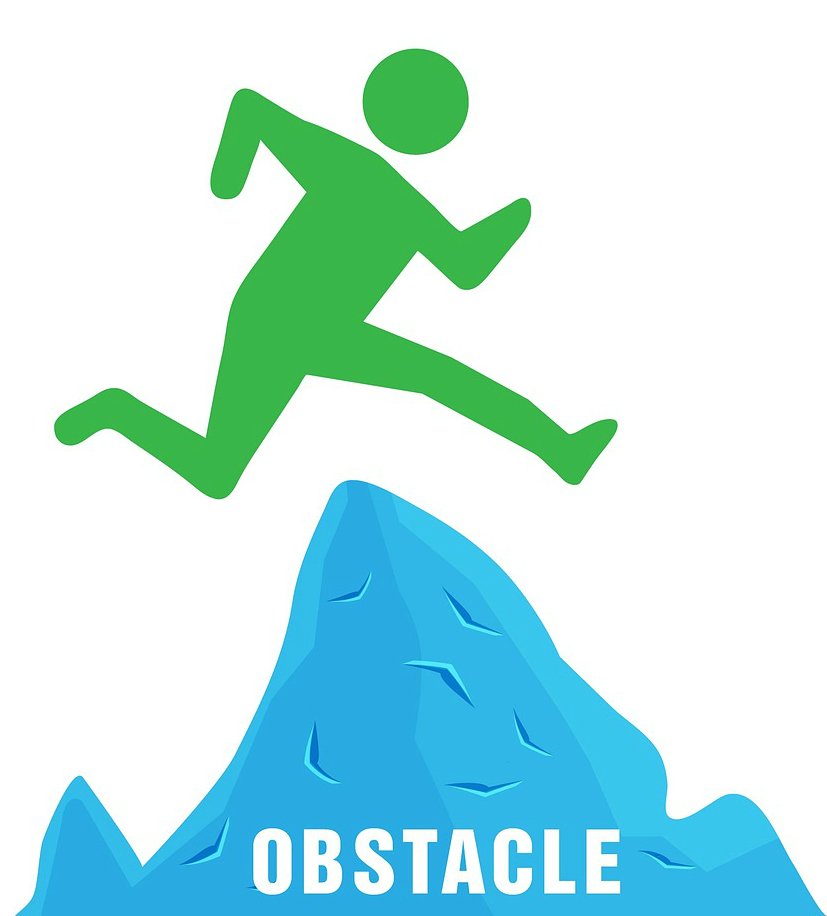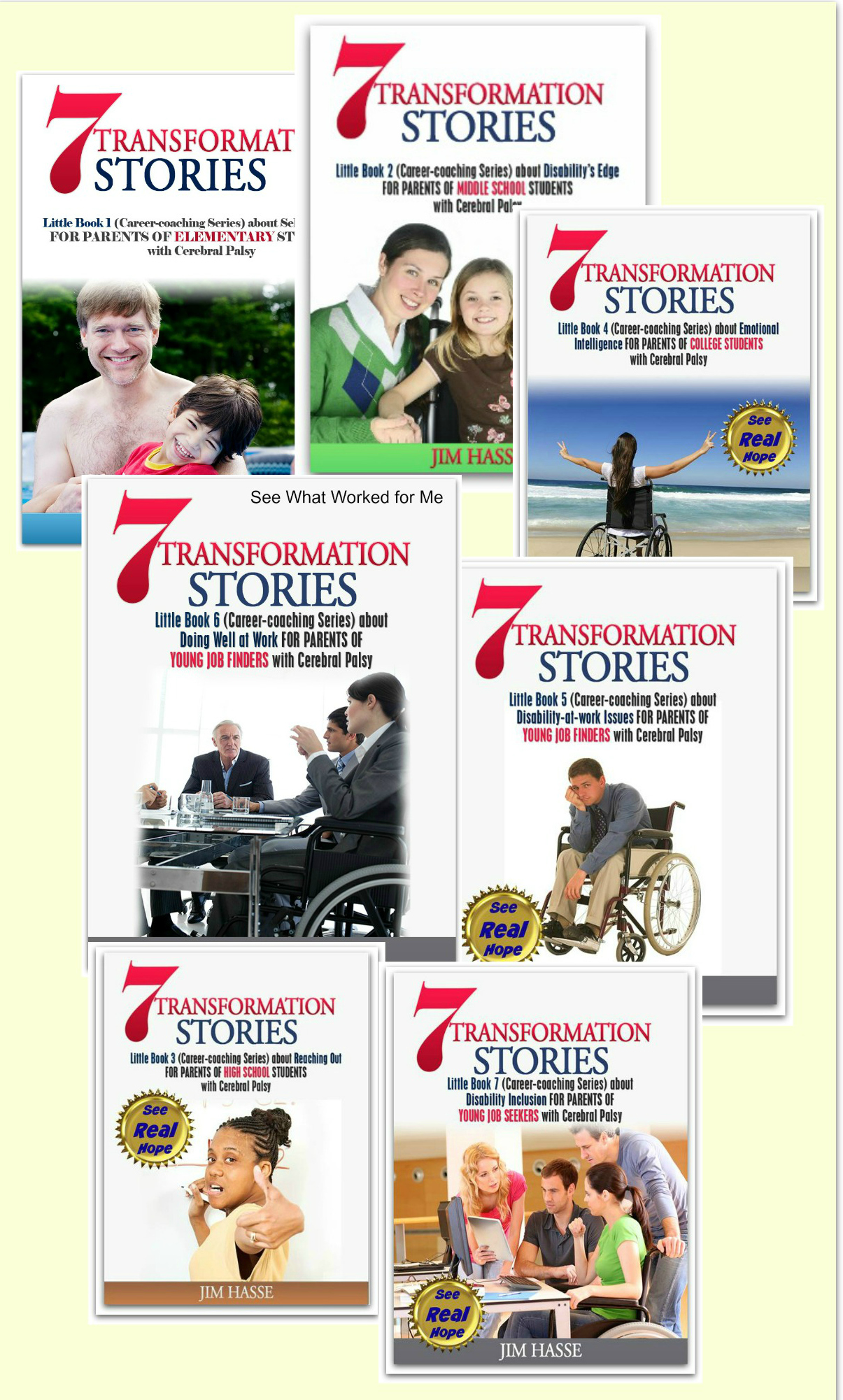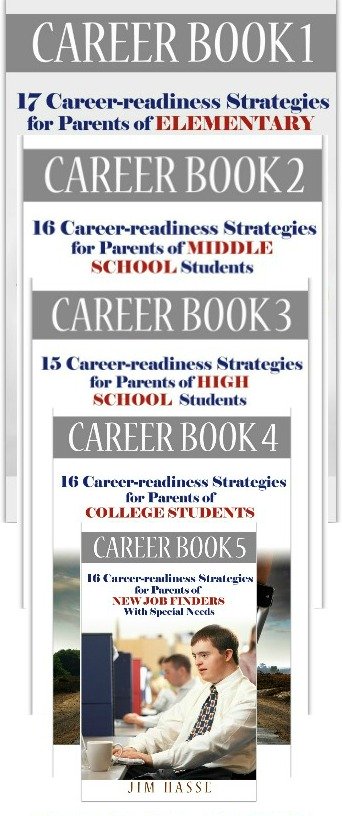Career Outlook Information: Cerebral Palsy Career Builder for Middle School
By Jim Hasse, ABC, GCDF, Disability Employment Expert
_________________________________________________________
Here’s a bit of career outlook information you can pass along to the middle school youngster with cerebral palsy (CP) you are mentoring as a career-coaching parent: STEM careers are hot right now. But, I need to add a caveat.
If your youngster has a mobility, visual, speech, or hearing disability due to CP and is intrigued by a STEM career -- one which uses knowledge of science, technology, electronics and math – he or she needs to be prepared to develop a plan for overcoming some of the obstacles that may present themselves.
That bit of "refined" career outlook information can be over-looked sometimes.
However, most importantly, remember that these obstacles are not barriers that will prevent your youngster from realizing his or her aspirations. You and your youngster just need to be aware of them and develop a plan for how to work around them.
Graduates in STEM fields can find work as health care practitioners, teachers, farmers, top-level managers in the private or government sector, and even writers or artists.
In many cases, disabilities are not barriers in STEM fields, where mental capacity and creativity are keys to success. STEM jobs are often not physically demanding. STEM jobholders use their heads -- not their muscles.

The barriers to STEM careers
Nonetheless, in pursuing a STEM career, youngsters with CP typically face unique challenges as they transition from middle school and high school to college and from college to employment.
For instance, your youngster might need special software or other technologies for following along in high school and college classes. He or she may need accessible work stations for lab classes. Or, your youngster may come up against teachers, faculty or employers who are fearful of dealing with a person with a disability.
Rory A. Cooper, Distinguished Professor, 1994-1997 Chairman of the Department of Rehabilitation Science and Technology and now FISA-Paralyzed Veterans of America Chair at the University of Pittsburgh's School of Health and Rehabilitation Sciences, knows about some of those obstacles first hand. Cooper has been in a wheelchair for 30 years after being hit by a truck while riding a bicycle.
In 2000, Cooper identified these three barriers to STEM
careers for people with disabilities (and he's been creative in tackling them
on several fronts since then):
To overcome
those barriers, Cooper has spearheaded the University of Pittsburgh's program
to introduce middle and high school students with physical, visual, and hearing
disabilities to STEM careers through job shadowing, robotic camps, and
internships with local businesses.
Yet, studies by the Commission on Professionals in Science and Technology found that students with disabilities were more likely to choose computer/information sciences and less likely to choose the other STEM areas (science and math) at the undergraduate level.
By the way, here’s another bit of career outlook information I find encouraging: The employment rate for scientists and engineers with disabilities is 83 percent, much better than the estimated 26 percent for the overall U.S. population with disabilities, according to the American Association for the Advancement of Science. So, pursuing a STEM career may be well worth the effort.
President Obama has called science, technology, engineering and math essential subjects to competing in the 21st-century global economy.
We need to recognize this reality: The U.S. is competing with countries that have plenty of individuals with technical expertise and cannot afford to leave any talented people out of the work force -- particularly those with STEM training.
Chalk that up as another bit of career outlook
information to give your middle school student.
What’s your youngster’s
biggest pre-college hurdle?
Join PACER’s Facebook
discussion.
Career outlook information resources
So, if your youngster is interested in pursuing a STEM career (particularly one that calls upon science and math capabilities), there may be some new incentives and aids coming down the pike during the next few years for overcoming some of the obstacles involved in making the dream of a STEM career come true.
I’d recommend keeping a folder on your computer, marked, “Career Outlook Information.” One of the files within that folder should be for “STEM Careers.”
Collect upcoming career outlook information about STEM careers. Those initiatives will likely reinforce existing efforts to help individuals with a disability develop STEM careers.
Here are some examples of such programs which already exist:
- Predisposition. Theories
abound that people with certain disabilities may actually have a
predisposition for STEM disciplines. In fact, the National Science
Foundation (NSF) awarded a grant to the Rochester
Institute of Technology to study a link between engineering and those
with Asperger's, a syndrome characterized by an affinity for detail.
Another NSF study at the Smithsonian Institution Astrophysical Observatory
has explored how the neurological differences of students with dyslexia
can lead to advantages for visual processing and learning in STEM
disciplines.
- Best
Practices. The NSF's Research in
Disabilities Education (RDE) program is working to broaden the
participation and achievement of people with disabilities in all fields of
STEM education by disseminating findings, project evaluation results, and
proven best practices and products to the public.
- Assistive
Technology. RDE awards have included projects that develop new
assistive technologies for people with disabilities. One example,
developed by a team at Pennsylvania State University, University Park, is
a hand-held submersible audible light sensor that fits in a test tube and
converts the light intensity to an audible signal to help blind scientists
conduct chemistry experiments.
- Face-to-face
Mentoring. Ohio State University (OSU) has received one of
nine NSF grants for Alliances for Students with Disabilities. Under the
grant, OSU is focusing on improving retention and recruitment rates among
students with STEM majors by creating a network of disability-related
learning communities through face-to-face mentoring, according to the
American Society for Engineering Education.
- Scholarships. Check the
comprehensive
list of computer science scholarships and grants available for
students with disabilities.
- STEM-specific
Internships. In 2000, the American Association for the
Advancement of Science (AAAS), which publishes the journal Science,
established EntryPoint! The
program provides internship opportunities to students with disabilities at
IBM, Merck & Co., the National Oceanic and Atmospheric Administration
(NOAA), the National Institute of Standards and Technology (NIST),
Lockheed Martin, CVS, NAVAIR, and NASA.
To participate in EntryPoint!, a student with a disability not only has to be interested in STEM careers but also have a 3.0 or above grade-point average.
- Internship
Opportunities. GettingHired.com has an extensive directory of
internship opportunities, many of them in STEM areas. Go to Find Jobs and enter
the keyword "internship" for a listing of more than 1,000
internships, searchable by city and state. Results give description and
details of each internship with a map showing location of the company's location.
- Online
Mentoring. DO-IT,
a multifaceted program at the University of Washington, helps people with
disabilities succeed in college and the work force. It includes an online
mentoring network and an internship program that are part of a program
called "Access to Science Technology, Engineering and
Mathematics" (AccessSTEM), which provides about 50 internship
placements a year in the states of Oregon, Washington, Alaska, and Idaho.
- Self-confidence. Incight, a not-for-profit organization based in Portland, OR, works with high school and college students with disabilities throughout the U.S. to help them overcome their fears and become better advocates for themselves. Incight also provides them with scholarships, mentors, and assistance in finding internships.
Now’s the time to research the barriers in developing a STEM career for your middle school student with special needs and learn how to overcome them.
But, remember you're not alone. There are plenty of
people and career outlook information resources ready to help you and your
youngster along the way -- and that may even more true during the next 10
years.
What’s your youngster’s
biggest pre-college hurdle?
Join PACER’s Facebook
discussion.
Return from Career Outlook Information to Career Test
Go to Cerebral Palsy Career Builders
This is Creative Commons content. You can freely and legally use, share and repurpose it for non-commercial purposes only, provided you attach this sentence and the following attribution to it (including the two links):
Originally written and illustrated by Jim Hasse, ABC, GCDF, owner of Hasse Communication Counseling, LLC, who, as a person with cerebral palsy, served for 10 years as a vice president in a Fortune 500 company during his 29-year career in corporate communication. He’s an Accredited Business Communicator, certified as a Global Career Development Facilitator and author of 14 Amazon books about disability awareness and disability employment issues.





